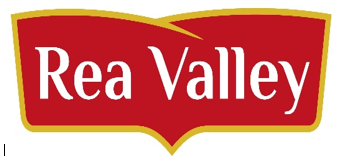Title Page
-
Conducted on
-
Engineer completing PPM
- Max Lloyd
- Andy Wilner
- Roger Watkin
- Craig Allman
Guidance
-
This planned Preventative Maintenance check sheet captures the minimum health and safety control measures that must be in place before, during or after the PPM activity. It is the responsibility of the person/s carrying out the PPM to ensure all control measures are in place and the job is safe to proceed with. Any concerns the engineer completing the PPM must notify the factory or production manager and advise on action required.
Hazards - The following hazards have been identified
-
Slips, trips, falls - slip on spillages, trip over objects, Fall from height - use of portable steps to access the 'V' belt guard, Sharpe objects - When removing guards with Sharpe edges, General hand tools, Manual handling - Lifting, replacing guards, Dangerous Moving Parts - risk if entrapment / entanglement , Lone working, Eye or skin irritation - use of spray grease, Electricity
Control measures
Personal Protective Equipment - Mandatory requirements
-
Nitrile gloves to be worn when using food care spray grease and Festo food grade oil
-
Safety eye protection with side shields or face visor to be worn when using food care spray grease. Use in well ventilated area. Do not inhale
-
Cut resistant level 3 (as a minimum) gloves to be worn when removing and handling guards. To Ensure good grip.
Equipment and specific control measures
-
Cordoned off the area of work to prevent access of unauthorised persons and to protect others. (Inform persons that work is taking place)
-
Work Area - Ensure good lighting is in place. Good housekeeping to be maintained through out the task
-
Hand tools - Ensure the correct hand tools are available. Inspect them prior to use. Ensure they are free from defects and fit for purpose
-
Isolate and lock off the power supply to the MB6 - This can be completed by isolating the main isolator and applying your personal padlock OR disconnecting the plug, and applying a plug lock. This must remain locked off for all intrusive interventions, removal of guards etc.
-
If parts of the equipment need to be inched round, to continue lubricating - guards must be replaced and the equipment powered up to inch parts round OR strict control measures in place to keep all persons (Including the engineer) at a distance from the moving parts being 'inched'. Lubrication must not take place whilst the equipment is running
-
Portable steps may need to be used to remove the 'V' belt guard. This is a 2 persons task so discussion and planning is required by both engineers to ensure this is executed safely.
-
Portable steps to be inspected prior to use to ensure they have no defects, they are stable, suitable and fit for purpose.
-
Portable Steps - 3 Points of contact to be maintained at all times
-
Portable steps - must be positioned 'forward facing'; to ensure they are stable. No leaning or reaching
-
Handling of guards; you must lift correctly. Do not exceed your capabilities. Request help where needed
-
Ensure that the pinch bar is in good condition and fit for purpose
-
Keep in regular contact with other engineers on site
-
All guards once removed to be placed in a safe area to prevent trips or obstructions
-
All fixed guards must be placed back into position and fixings secured and equipment made safe before the MB6 is powered back up and isolations removed
-
All tools, equipment to be removed from the area prior to handover to production. Clean up any spillages in the area. Complete PPM paper work
Point of work Risk Assessment - any tasks or additional hazards that are not covered in the PPM a dynamic risk assessment must be completed
-
Additional Specific Hazards identified
-
Add new hazards identified and additional control measures
Signature - By signing below you agree that the task is safe to proceed and all required control measures are in place
-
Add signature








